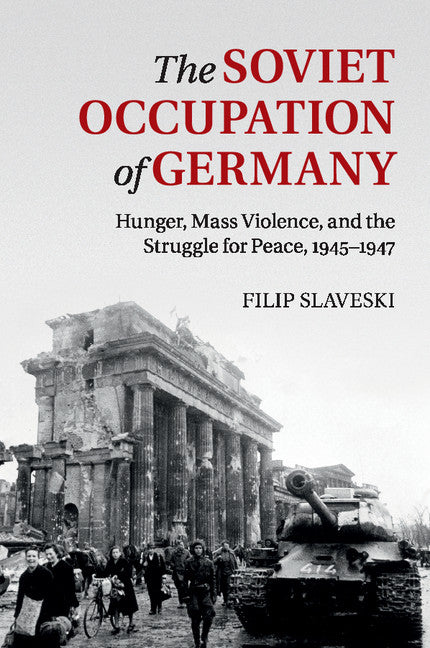Freshly Printed - allow 8 days lead
Couldn't load pickup availability
The Soviet Occupation of Germany
Hunger, Mass Violence and the Struggle for Peace, 1945–1947
A major account of the Soviet occupation of postwar Germany and the beginning of the Cold War.
Filip Slaveski (Author)
9781316635483, Cambridge University Press
Paperback / softback, published 15 December 2016
188 pages, 1 map 7 tables
22.9 x 15.2 x 1 cm, 0.4 kg
'… this is an extremely interesting and informative work, based on a very thorough and careful reading of a range of Russian, English and German archival, primary and secondary literature on the subject. The book is also written with a degree of passion … and, thanks to this and the author's engaging writing style, is easy to read and comprehend.' Steven J. Main, Europe-Asia Studies
This is a major account of the Soviet occupation of postwar Germany and the beginning of the Cold War. Dr Filip Slaveski shows how in the immediate aftermath of war the Red Army command struggled to contain the violence of soldiers against German civilians and, at the same time, feed and rebuild the country. This task was then assumed by the Soviet Military Administration in Germany (SVAG) which was established to impose order on this chaos. Its attempt, however, intensified the battle for resources and power among competing occupation organs, especially SVAG and the army, which spilled over from threats and sabotage into fighting and shootouts in the streets. At times, such conflicts threatened to paralyse occupation governance, leaving armed troops, liberated POWs and slave labourers free to roam. SVAG's successes in reducing the violence and reconstructing eastern Germany were a remarkable achievement in the chaotic aftermath of war.
Part I. The Explosion of Violence: 1. The Soviet advance into Germany
2. Inheriting wartime chaos
3. Bringing soldiers to heel after the war
4. SVAG-Army conflicts in 'peacetime'
5. Suicide, apathy, violence
6. The muted German response to violence
Part II. The Beginnings of Peace and Stability: 7. The struggle to feed Germany
8. The politics of food and peaceful protest
9. Building the shed
10. The shift in policy and end of chaos.
Subject Areas: Military history [HBW], Postwar 20th century history, from c 1945 to c 2000 [HBLW3], European history [HBJD]


